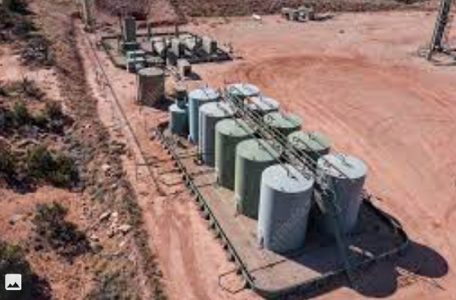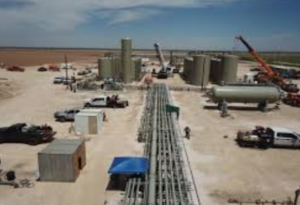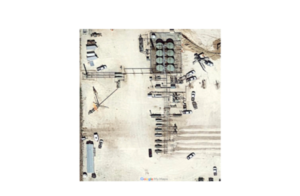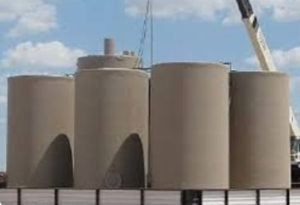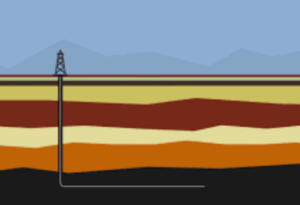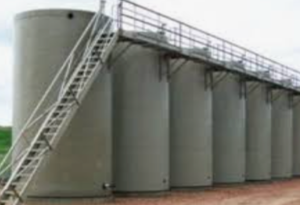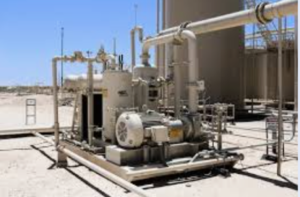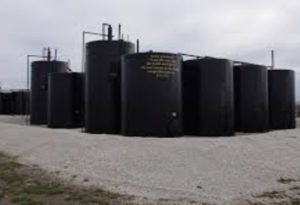To install an API 12F tank at an oil battery, start by preparing the site and foundation, ensuring proper drainage and a level base. Position and secure the tank using appropriate lifting equipment and anchor bolts. Connect all necessary piping, fittings, and instrumentation, followed by thorough hydrostatic testing and final inspections. Finally, ensure regular maintenance and continuous monitoring to guarantee long-term safety and efficiency.
Installing an API 12F tank at an oil battery involves several steps, which need to be done carefully to ensure safety and compliance with regulations. Here’s a general outline of the process:
Planning and Preparation
- Site Selection and Preparation: Choose a suitable location within the oil battery site. The area should be leveled and cleared of any debris or obstructions. Ensure the site has proper drainage to prevent water accumulation.
- Permits and Regulations: Obtain the necessary permits and ensure compliance with local, state, and federal regulations, including environmental and safety standards.
- Tank Specifications and Ordering: Confirm the specifications of the API 12F tank, including size, capacity, and materials. Order the tank from a certified manufacturer.
Installation Process
- Foundation Preparation: Construct a suitable foundation for the tank. This typically involves creating a concrete pad that is level and can support the weight of the tank when full. The foundation should be designed according to the manufacturer’s recommendations and relevant standards.
- Tank Delivery and Inspection: When the tank is delivered, inspect it for any damage or defects. Ensure that all components, including fittings and accessories, are included.
- Positioning the Tank: Use cranes or other lifting equipment to position the tank on the prepared foundation. Ensure the tank is correctly aligned and level.
- Securing the Tank: Secure the tank to the foundation using anchor bolts or other securing methods as recommended by the manufacturer. This is crucial to prevent movement during operation.
- Connecting Piping and Fittings: Connect the necessary piping to the tank. This includes the inlet and outlet pipes, venting systems, and any other necessary fittings. Ensure all connections are tight and leak-free.
- Instrumentation and Controls: Install any required instrumentation, such as level gauges, pressure sensors, and control valves. Ensure these are correctly calibrated and functional.
Testing and Commissioning
- Hydrostatic Testing: Conduct a hydrostatic test to check for leaks and ensure the tank can handle the required pressure. This involves filling the tank with water and inspecting it for any signs of leakage.
- Electrical and Safety Systems: Connect electrical systems, such as grounding and cathodic protection, if required. Install safety equipment, including fire suppression systems and spill containment measures.
- Final Inspection: Perform a final inspection to ensure all components are correctly installed and functioning. This includes verifying the integrity of all connections and ensuring compliance with safety standards.
- Commissioning: Once all inspections and tests are complete, the tank can be commissioned. This involves gradually introducing the product (oil) into the tank and monitoring for any issues.
Maintenance and Monitoring
- Regular Maintenance: Implement a regular maintenance schedule to ensure the tank and associated equipment remain in good working condition. This includes periodic inspections, cleaning, and testing.
- Monitoring: Continuously monitor the tank’s performance and safety systems to detect any potential issues early. Use remote monitoring systems if available.
By following these steps, you can ensure the proper installation of an API 12F tank at an oil battery, promoting safety, efficiency, and compliance with regulatory requirements.
To install an API 12F tank at an oil battery, first prepare the site and foundation, then position and secure the tank. Connect all necessary piping, fittings, and instrumentation, and conduct thorough testing for leaks and functionality. Finally, perform regular maintenance and monitoring to ensure ongoing safety and efficiency.

